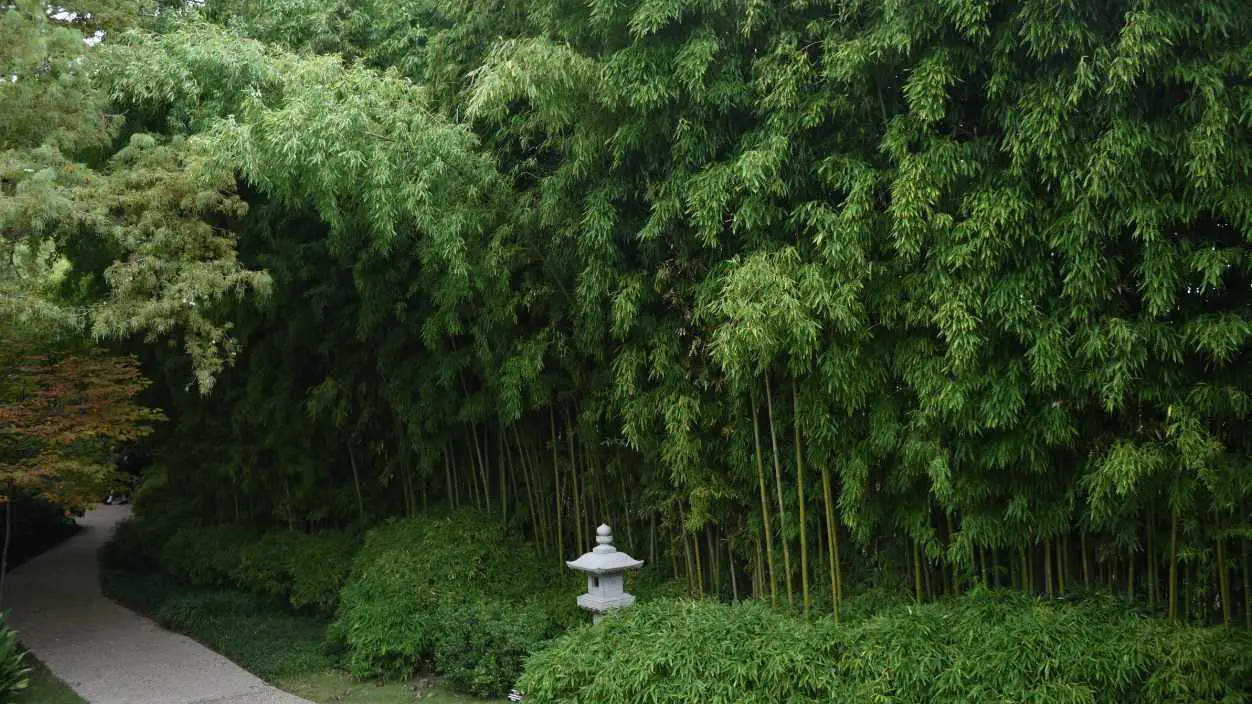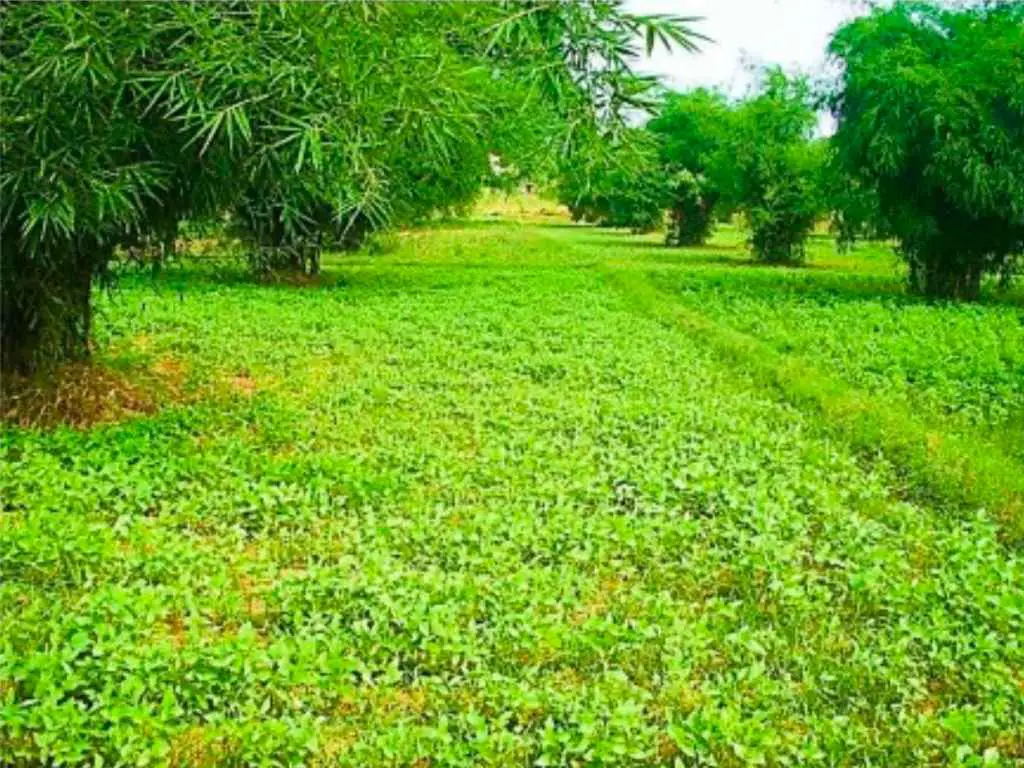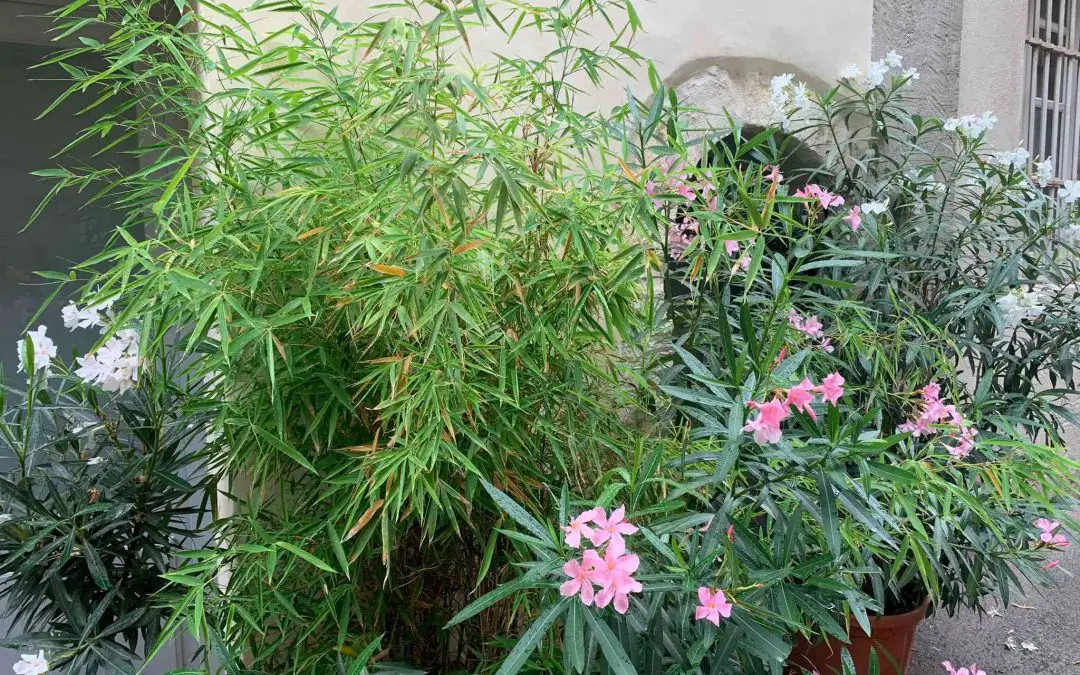Companion planting is one of the most important concepts in permaculture and organic gardening. And bamboo is a towering figure in the field of sustainable agriculture. So people often wonder what role this miraculous grass can play in their ecological landscaping. What are the best companion planting practices with bamboo?
Companion planting is a gardening technique in which different plants are grown together for the mutual benefit of each plant. By adding bamboo to your mix, you can build up the topsoil and cast some shade over your garden. The upright culms and delicate leaves also add a valuable aesthetic quality. But watch out for bamboo’s rhizomatous roots, which can spread vigorously.
Properties of bamboo for companion planting
As an organic gardening strategy, companion planting typically brings together plants that complement each other by restoring the soil, repelling pests, or attracting beneficial insects. Corn, squash, and beans, for example, are commonly planted together, as bean plants are effective at fixing nitrogen and enriching the soil to the benefit of the other plants. Marigolds and tomatoes also grow famously well together, because the marigolds are able to repel pests that typically afflict tomatoes.
Bamboo for healthy topsoil
As far as we know, bamboo doesn’t repel any specific bugs or pests. But bamboo itself really doesn’t attract pests either. And it doesn’t fix nitrogen, but its active roots and falling leaves do have a way of building up the topsoil and bolstering the humus.
If you have a healthy garden with rich soil, there’s no need to plant bamboo in the middle of it. But if you’re working with poor, degraded soil and just getting started, bamboo makes an excellent pioneer plant. Bamboo’s tenacious roots can break up hard soil, adding beneficial micro-organisms as the plant grows and spreads. It can also bind loose soil to prevent erosion and landslides.

Meanwhile, the leaves that fall steadily from the bamboo provide a useful layer of mulch. This mulch helps the soil to retain life-giving moisture. And eventually, the leaves decay relatively quickly, adding more nutrients to the soil and humus.
Bamboo roots: shallow but vigorous
As a grass, bamboo has very shallow roots that ordinarily only grow about 12 inches deep. For this reason, small plants, flowers, and vegetables will have a hard time competing to gain a foothold. Bamboo makes a better companion with larger bushes and trees with deeper taproots that have already established themselves. In this case, bamboo can help by crowding out other weeds without disturbing the tree.
Many species of running bamboo have especially expansive and intrusive roots that can actually be very disruptive to other areas of the garden. If you’re planting this sort of bamboo, be sure to have a containment strategy. My favorite technique is to dig a trench around the bamboo. This makes it easy to monitor the roots and prevent them from spreading out of control. Otherwise, the bamboo can become more of a bully than a companion.
Bamboo for shade
Most species of bamboo grow fairly tall and fairly fast. This enables them to cast some shade over your garden. If you’re growing tomatoes and peppers, this is bad news. But if you have shade-loving plants, including orchids, bromeliads, ornamental grasses, or certain culinary herbs, this is great.
Generally speaking, you’ll probably want to keep those other plants in pots, so that the roots aren’t competing with the bamboo. Conversely, you could keep your bamboo in a pot or container, and let the other plants grow directly in the earth. But with its robust root system, bamboo can sometimes be a challenge to manage in a pot.
Companion plants with ornamental bamboo
Most people decide to plant bamboo just because they love the way it looks. There’s something delightful and beautiful about those tall, elegant poles and the gracefully draping foliage. It’s an ideal plant to include if you’re designing a Japanese garden or a secluded space for yoga and meditation.

If it’s an Asian aesthetic you have in mind, you might also want to include some Japanese maple, Mugu pine, and azaleas. A well-manicured bonsai tree will take your garden to the next level. In that case, you can even make a bamboo bonsai.
One of the most beautiful and complementary pairings I’ve seen is with bamboo and oleander. If you’re gardening in a mild Mediterranean climate like California, oleander and bamboo are perfect together. The slender, lanceolate leaves are very similar in appearance, but the flowering oleander adds a whole other dimension of color. (Refer to the featured image at the top of the page.)
Intercropping with bamboo
If you have a bamboo farm, especially one in a tropical habitat, you might consider intercropping with bamboo. Typically, tropical bamboo farms, like those in Southeast Asia, Africa and South America, grow clumping bamboo. As such, the clumps normally form long rows. Because of their clumping root systems, these bamboo varieties are less likely to interfere with other plants.
When cultivating bamboo, it takes several years for the plants to reach maturity. When they are still small, there will be lots of space between the rows. That area is ideal for growing peppers, yams and other annuals that are suitable to the local soil and climate conditions. This generally works quite well for about the first three years. After around year four, the bamboo should be getting tall and forming a shade canopy. At that point, there probably won’t be enough sunlight between the rows.

This is one of those areas where we need more research. There might be certain tropical fruit trees that grow particularly well when intermixed with clumping bamboo. We don’t really know yet. If you’ve done any experiments or have any firsthand experience in this area, please let us know.
I’ve heard of farmers in Africa mixing their bamboo with all sorts of annual food crops, like peppers, groundnuts and cassava. This is a great way to get more productivity out of the farm while waiting for the bamboo to mature. In other cases, tropical farmers will raise shade-loving plants like turmeric and ginger beneath the canopy of their fully-grown bamboo.
Intercropping with temperate or running bamboo is a little trickier, as the roots spread and create more of a uniform forest. But again, the shallowness of these roots does make bamboo compatible with other trees, whose roots reach far deeper into the soil. In most cases, this would actually result in a healthier and more diverse ecosystem.
Bamboo with bamboo
If there’s anything that looks great with bamboo, it’s more bamboo! Because there are so many varieties of bamboo, coming in all different sizes, shapes, and colors, you can have a great time combining different bamboo species.
To get the best out of your bamboo companionship, look for contrasting characteristics. For example, a giant timber bamboo such as Phyllostachys ‘Henon’, with dark green culms, will look great alongside a medium-sized bamboo with yellow culms or green and yellow stripes, such as Bambusa multiplex. Or place an upright Phyllostachys alongside a shorter bamboo with arching culms, like Mexican weeping bamboo or some kind of Himalayacalamus.
As a finishing touch, you can plant some dwarf bamboo as a ground cover around any larger bamboo or flowering shrubs. Many of these miniature bamboos also have variegated leaves, which can go a long way in adding color and interest to your garden.
So have fun, get creative, and remember to have a containment strategy so your bamboo doesn’t overrun your garden.
NOTE: This article first appeared in July 2021. The most recent updates occurred in May 2022.
Complementary reading
If you enjoyed reading about companion planting with bamboo, please consider sharing the article or subscribing to the blog. You might also want to read up on other topics related to bamboo gardening.
- Watering bamboo
- Fertilizing bamboo
- Bamboo for erosion control
- Growing bamboo in the shade
- When bamboo leaves turn yellow
FEATURE PHOTO: Phyllostachys aurea growing alongside Nerium oleander in Arles, France. Photo by Pacha Hornaday.





















I am a Cambodian woman who love to plant bamboo, we have a few species from local Thailand and Viet Nam and I have an interested small group who are planting too in my community. We would like to know more about other crops where are able to complement in bamboo farm. Thank you.